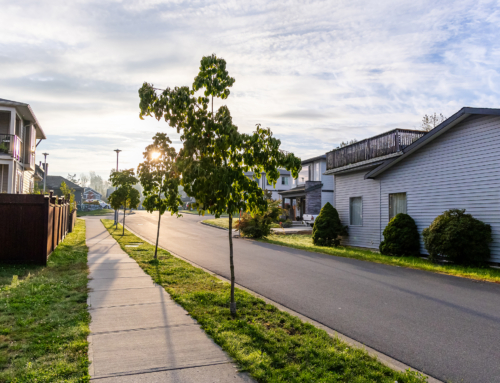Montgomery County has always rewarded careful shoppers. It sits at the crossroads of city energy and suburban calm, with town centers that feel lively and green streets that feel quiet, and with train lines that can pull you into Center City as easily as a highway can carry you to King of Prussia or Princeton. That mix draws first time buyers who want a starter home near transit, move up families who want yard space and access to well regarded districts, and downsizers who want walkable pockets with services close by. The market here rarely behaves like a single story. It moves in lanes that depend on location, price band, property type, and even the way a home photographs on a phone screen. If you understand those lanes, you can make calm choices in a county that offers a lot of good options.
Buyers feel the county in layers. The river towns and rail served boroughs deliver a daily routine that is built around sidewalks, morning coffee walks, and quick trips to a station. The interior townships bring cul de sacs, parks, and sports fields that anchor weekends. The western arc near major employers adds another layer for people who work in health care, life sciences, logistics, and retail. Each layer has its own rhythm and its own price curves. A three bedroom twin near a rail stop moves in a different lane than a four bedroom colonial on a half acre, even if the total square footage looks similar on paper. A condo with an association fee moves in a different lane than a fee simple row, even if the monthly outflow comes out close once you add taxes and utilities. Seeing the lanes makes the search feel much simpler.
The county wide trend lines remain a helpful backdrop while you are thinking about your lane. You can scan a running picture of home value trends and price levels on the open county page at Zillow Home Values for Montgomery County. It shows year over year movement and the way recent months have behaved as rates and supply changed. At the same time, the county maintains a public view of how housing intersects with population, wages, and planning goals. That broader policy lens appears in the Housing Market Impacts and related pages from Montgomery County Planning. Together those two sources give you both a market snapshot and a civic context. The market snapshot tells you what buyers are paying today. The civic context tells you how leaders expect the county to evolve and where infrastructure and planning interest is likely to lean.
One of the most consistent local truths is the power of rail and road access. Homes that sit inside a simple walk to a station tend to draw steady interest because they flatten the commute into Center City and they offer a clear path for teenagers and college students who need mobility without a car. That clarity keeps a baseline of demand in many station areas even when rates rise. Road access tells a similar story for people whose jobs sit outside the city. Proximity to the Turnpike, the Blue Route, or Route 202 can change the way a week feels, which is why buyers sometimes pay more for a block that shortens a daily drive by ten minutes. Good access can also lift resale confidence because a new set of buyers will calculate time in the same way the current owner did.
Another steady truth is the value of first floor light and simple flow. In a county where the housing stock spans classic colonials, split levels, ranches, twins, and newer builds, the homes that show open sight lines and warm light had little trouble finding buyers in the past few seasons. Families want kitchens that hold a table and an island, living rooms that accept both a sofa and a reading chair, and dining rooms that can host a holiday without feeling formal every other day of the year. You do not need to chase a brand new kitchen to compete. You do need to present a space that looks clean, bright, and easy to live in.
Inventory still feels tight in the most convenient pockets. When a well priced home lands in a school area that buyers already trust, the first week brings a rush of private showings and a full open house. The pattern looks similar across the calendar, with a spring wave and a fall wave that pull the largest crowds and a winter season that still produces real buyers who have fewer choices but strong intent. In the tightest pockets the winning offers continue to be the ones that arrive clean and complete. That means a real letter from a lender, a clear settlement timeline, and a set of terms that match the seller’s stated needs. In pockets with deeper choice you may see more room for negotiation and inspections that run the full course.
Price bands act like channels in this county. The two hundred fifty to three hundred fifty range behaves differently than the four hundred to five fifty range, which behaves differently than the seven hundred to nine hundred range. The lowest bands remain active because rents in many town centers make ownership attractive for people who plan to stay at least a few years. The middle bands attract move up buyers who have built equity and want a yard and a second living area. The upper bands cluster near historic districts, larger lots, and school areas that pull buyers from the city when families feel ready for more space. The very top of the market is thinner and requires careful preparation even for beautiful homes because the buyer pool is smaller. The right photos and the right number at the start do most of the work.
Condos and townhomes serve a different buyer than single homes, and the difference is not only budget. It is maintenance preference. Many buyers who work long hours or travel often will gladly trade a small monthly fee for simplicity if the association is responsible and the rules are sensible. In these communities you see quick turn inventory that turns faster when buildings have strong reserves and recent capital projects behind them. In towns where walkable life is rising, a condo or a stacked flat near dining and a trail can outcompete a larger home that sits far from daily errands. The flip side is that buyers who love gardens and privacy lean back toward single homes even when the monthly number needs a little stretch. Knowing your maintenance style keeps you from shopping the wrong segment.
School conversation remains a strong current under the surface of most searches. The county has many districts with sturdy reputations and a long record of sending graduates in healthy directions. Families often pick a district first and then choose among the communities within that map. That pattern concentrates demand and can push values above nearby areas when the housing stock is similar. It also means buyers should confirm school lines carefully because a boundary that cuts across a neighborhood can change long term plans. You will see this awareness in listing remarks that call out the district in clear terms. You will also see it in resale speed when district and block feel match.
Remote and hybrid work patterns continue to shape demand in subtle ways. Extra bedrooms that can function as a real office lift interest and value in many bands. Finished lower levels with daylight and good ceiling height add a second living room that allows two people to work without conflict. Outdoor space that can hold a small table or a lounge set adds real life value because it functions as a pressure release on days when everyone is home. None of this is fancy. It is simply a response to how people live now. If you are selling, you can present those uses without a major project. If you are buying, you can decide whether a second space is necessary now or whether you can live well with a plan to create one later.
Rates influence what buyers can afford, but they have not erased the appetite for the right home. When rates press higher, some buyers shift a little farther out or choose a different property type. Some wait for a longer horizon and rent in the meantime. Others adjust the wish list and stay close to the same neighborhoods they always wanted because proximity to family, work, or schools outweighs the savings of a longer drive. The buyers who succeed in any rate climate tend to share a few habits. They secure a solid pre approval early, they refine a search area that suits the geometry of their week, and they move decisively when a home that fits appears. That is as true in Jenkintown or Glenside as it is in Conshohocken or Blue Bell.
Sellers benefit from an honest read of condition and from a number that respects the band they are in. A home with older systems can still sell quickly at a fair price when the list is calibrated and the presentation is careful. A home that is beautiful but overpriced will sit, and the first reduction usually costs more than setting the number correctly on day one. Appraisals continue to matter for any offer with a loan. Packaging recent comps and an upgrade list for the appraiser remains a small but important step. Clean gutters, fresh mulch, and bright bulbs still move the needle. The small things tell a story that buyers understand without words.
The near term view for Montgomery County looks like steady demand where life is easiest and steady opportunity in pockets that sit just outside the most obvious names. Investors with a patient plan still shop small multis in rail served towns and single homes that need a gentle refresh rather than a complete overhaul. First time buyers continue to find good fits in twins and townhomes that keep monthly costs predictable. Families trade up within the same district because they like their routine and want more elbow room without changing everything else. None of that is a headline. It is the daily hum of a healthy market.
If you want to ground this narrative with current listings and price bands by township and school area, open a live search on Homes for sale in Montgomery County. Seeing real addresses side by side will make the lanes we described feel tangible. If you also want a sense of how our team reads the county and guides clients through timing, pricing, and negotiation, skim the firm overview on About Albright Real Estate. The combination of street level listings and clear counsel is what turns a complex market into a set of calm steps.
Bring this down to a choice you can make this month. If you are buying, decide on two townships and one rail line or highway you will honor, then tour a handful of homes in each band that suits your budget. If you are selling, complete a short list of preparation items that brighten the front door, floors, and kitchen, then set a number that places you inside the right search band with confidence. Both paths benefit from a simple rule. Let the county teach you. Walk a main street at noon and at seven o clock. Drive your commute on a real weekday. Stand on the sidewalk and listen to a block for five minutes. The signals you need are there.
Montgomery County will always reward people who match their daily life to the homes and streets that carry it. When you do that matching with care, the rest of the process becomes easier. If you are ready to act on what you have learned, start with a quiet scan of homes for sale in Montgomery County. A single afternoon of walking and driving those options will tell you more than a week of scrolling, and it will put you in position to move when the right front door opens.








